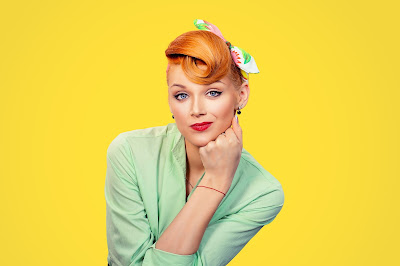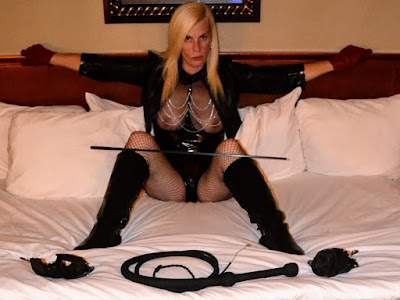Sexual Fluidity - by Starla Knight
Well Friction readers, we’ve come to our twelfth issue, and twelfth discussion on all things sexual. IF there is anything to be gleaned from the past twelve issues, or the thousands of years of human interaction, it is that human sexuality has never been simple. It likely never will be. But it is the human condition to examine ourselves, so even though we may never have all the answers, we’ll continue to try and answer as many as we can.
Documentation of humans participating in some variation of a homosexual relationship can be found as far back as the Ancient Egyptians, meaning that sexuality has never been the simple hetero only scenario that most religions and cultures would have you believe. Nor is it as simple as being gay, straight or even bisexual. Yes, sexuality is as varied as humanity itself.
And now, we have more scientific literature to back up the claim. According to recent research from Ritch Savin-Williams, a psychology professor of human development at Cornell University, there is a spot on the sexual spectrum that is not straight, gay or bisexual – it’s called being “mostly straight.”
When it comes to women being accepted as having lesbian or bisexual tendencies towards being aroused by another female, it is more culturally accepted than it is for our male counterparts. This can often lead to self-doubt in men who sometimes have what some might consider a homosexual thought or arousal but believe themselves to be straight. Perhaps now the fear of ambiguity can be placed to rest with some men.
Savin-Williams’ conclusion stems from research on sexuality that he conducted and published in a book titled “Mostly Straight: Sexual fluidity Among Men.”
In one study Savin-Williams worked on, participants who identified as men or women were shown pornography. By measuring the dilation of their pupils-an indicator of sexual arousal, as proven by a precious study of his published in the Journal of Personality and Social Psychology, Savin-Williams and his team were able to conclude that women were aroused by featuring women with men and women with women. Men had similar results, which Savin Williams calls being “mostly straight.”
This is not to say that no one is straight. “I wouldn’t say that no one is totally straight and I never have, despite press reports,” Savin-Williams told INSIDER. “I believe the cast majority of men are exclusively straight.”
Sexuality is a spectrum, but society doesn’t always allow room for male transgressions. Even when polling both sexes, each are more likely to claim that its more acceptable for a woman to have intimate relations with another woman than it is for a man to have any sort of intimate interactions (or thoughts) with (about) another man.
Savin-Williams is not the first scientist to deal with the idea that sexual preference isn’t quite as rigid as was previously believed. Many people already know about the Kinsey scale, the near ubiquitous system that allows people to gauge their sexuality on a sliding scale, which revealed that people do not always fit exclusively into heterosexual or homosexual categories. In fact, according to Savin-Williams, the Kinsey scale allows space for people who might identify as mostly straight.
 “Because the seven-point Kinsey Scale was a continuum from exclusively straight to exclusively gay/lesbian, there was an obvious place between exclusively straight and bisexual leaning straight – Kinsey 1s or mostly straight,” Savin-Williams stated.
“Because the seven-point Kinsey Scale was a continuum from exclusively straight to exclusively gay/lesbian, there was an obvious place between exclusively straight and bisexual leaning straight – Kinsey 1s or mostly straight,” Savin-Williams stated.But men have largely been excluded from the sexual fluidity narrative.
“Very few researchers seemed to notice these sexually fluid or mostly straight individuals, except with women,” Savin-Williams claims. “Then, while interviewing straight men for a study, I discovered that a number of them said that they were not exclusively straight, but mostly straight. These self reports were confirmed by their confidential surveys and by their physiological reactions to watching porn: their pupils dilated to men masturbating, not as much as their pupils dilated to women masturbating, but an elevation nevertheless.
This exclusion is due to the fact that, as Savin-Williams said, conventional society doesn’t allow much room for variance or growth in male sexuality.
“Men are affected by the belief that any level of same-sex attraction must mean you’re gay. Our culture likes our men simple- gay or straight,” Savin-Williams said. “We give women greater freedom to be flexible, to be affected by the environment; they can act masculine and not be labeled lesbian but men can’t act feminine without being thought gay.
Women have sexually fluid representation, but men don’t get as much.
This is certainly true in popular culture. It’s hard to come across a movie or TV show these days that doesn’t feature a complex, sexually fluid female character, like Eleanor Shellstrop on “The Good Place” or Petra Solano on “Jane the Virgin.” In fact, since Ellen DeGeneres first announced her character Ellen Morgan (on her sitcom Ellen) was gay more than twenty years ago. It was greatly publicized as a brave move for sexual progression, yet Billy Crystals’ character Jodie Dallas on Soap was an openly gay character over forty years ago, back in 1977. Why was the character of Jodie forgotten and dismissed during the sexual revolution on television?
Male characters have some sexually fluid representation (“Jane the Virgin,” for example, has a make character, Adam, who is bisexual) but, generally, male figures in popular culture are relegated to one of two binaries: 100% straight or 100% gay.
Savin-Williams believe that the answer to helping men and women becoming more comfortable with mostly straight men relies, in part, upon “more famous people coming out as mostly straight. Josh Hutcherson began this years ago, but few have followed. I would love to see more young men come out as mostly straight to their friends and families.
More pop culture representation wouldn’t hurt either.
There are more mostly straights among the millennial generation than in previous generations, largely because there’s an incredible acceptance and celebration of sexual, romantic, and gender diversity. Young people believe in the spectrum of sexuality and romance. There are already more mostly straight women and men than bisexual and gay/lesbian individuals combined. Mostly straights need to be freed from their closets.
Don’t be afraid, if you fit on the mostly straight spectrum, you’re no longer alone. You never really have been. Be yourself, no matter where you fall on the spectrum.
As always, my lovies, I would love to hear what you think. Have you repressed your true self because gay or bisexual didn’t fit your modus operandi, despite having those nagging feelings of arousal from time to time for the same sex? Email me at Starla.friction@gmail.com






Comments
Post a Comment